
Tetris Worlds is a version of the video game Tetris. Originally released in 2001 for Microsoft Windows and Game Boy Advance, it was later released for Xbox, GameCube, and PlayStation 2 in 2002. In 2003, an Xbox Live version titled "Tetris Worlds Online" and a single-disc compilation version were released for the Xbox. The latter was bundled with Xbox systems.

Smuggler's Run is a video game developed by Angel Studios and published by Rockstar Games as a launch title for the PlayStation 2 on October 26, 2000. In the game, the player plays as a smuggler who has a number of different vehicles at his disposal including dune buggies, rally cars, and military vehicles. The vehicles are used to smuggle assorted cargo through three different large, open levels. The game, which was an early release for the Sony PlayStation 2, features career and 1- to 2-player arcade modes.

Call of Duty: Finest Hour is a first-person shooter video game developed by Spark Unlimited and published by Activision for GameCube, PlayStation 2, and Xbox. It is the first console installment of Call of Duty.

The Urbz: Sims in the City is a video game for the Game Boy Advance, GameCube, PlayStation 2, Xbox, and Nintendo DS. It is the third Sims game for video game consoles and is the second Sims game not to be released on Microsoft Windows; after a planned PC port and sequel were both cancelled due to mediocre sales. The next release for consoles and handhelds was the console port of The Sims 2.
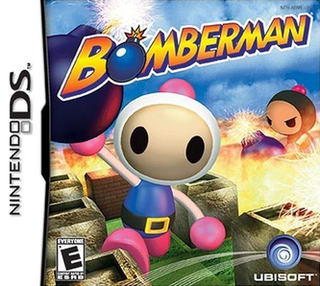
Bomberman is a 2005 video game developed by Racjin for the Nintendo DS. It was released by Hudson Soft in Japan on May 26, 2005, and published worldwide by Ubisoft. The game is notable for its chibi art style, previously seen in the Bomberman Land series.

The Sims Bustin' Out is a video game that was released in 2003/2004 for the PlayStation 2, Xbox, GameCube, Game Boy Advance and N-Gage. It is the second title in The Sims console series and the first The Sims title not released on Windows PC.

Meteos is a 2005 tile-matching video game developed by Q Entertainment and published by Bandai for the Nintendo DS. It was produced by Q Entertainment founder Tetsuya Mizuguchi and designed by Masahiro Sakurai. Meteos was inspired by the video game Missile Command (1980), the film The Matrix (1999) and the television series 24 (2001-2010).

Fullmetal Alchemist: Dual Sympathy is a video game for the Nintendo DS. The game was released in Japan on July 21, 2005, two days before the first Fullmetal Alchemist movie came out, and was accompanied by a PlayStation 2 release of Fullmetal Alchemist 3: The Girl Who Succeeded God. Dual Sympathy was announced by Destineer on September 12, 2006, for release in North America during 2006. It had gone gold on November 27 and was released on December 12, 2006.
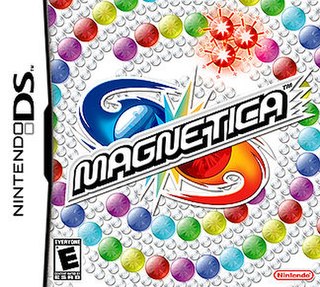
Magnetica is a puzzle video game for the Nintendo DS, released as part of the Touch! Generations series. The game was developed by Mitchell Corporation and published by Nintendo, and is based on Mitchell's 1998 arcade game Puzz Loop.
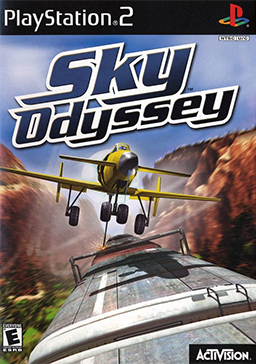
Sky Odyssey, known in Japan as The Sky Odyssey, is an action/adventure flight simulator for the Sony PlayStation 2. It was developed by Cross and released in 2000. The game's soundtrack was composed by Kow Otani, who also composed the music for Shadow of the Colossus, a variety of Gamera films, and various anime.
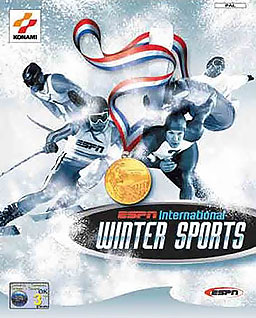
ESPN International Winter Sports 2002, known in Japan as Hyper Sports 2002 Winter, is the name of two sports video games released in 2002 by Konami, one for the PlayStation 2, Xbox, and GameCube, and the other for the Game Boy Advance. In Japan the game is part of the Hyper Sports series, known internationally as the Track & Field series.

Frogger's Adventures: The Rescue is an action-adventure video game released in 2003 by Hudson Soft. It is based on the original 1981 Frogger arcade game, and contains similar hop-and-dodge style gameplay.

Bomberman Land Touch! is a puzzle video game developed by Hudson Soft for the Nintendo DS. The game was first released in Japan and North America in 2006. Part of the Bomberman franchise, Touch! is the third game in the Bomberman Land series and its first to be released outside Japan.

MySims is a video game developed by EA Redwood Shores and published by Electronic Arts as a spin-off to Maxis' The Sims franchise for the Wii and Nintendo DS in September 2007, re-released for Microsoft Windows and mobile phones in 2008, and for BlackBerry in 2009.

Super Puzzle Bobble, released as Super Bust-A-Move in Europe and North America, is a puzzle video game in the Puzzle Bobble series. It was developed by Taito, and released on November 27, 2000 by Acclaim Entertainment for the PlayStation 2, and by CyberFront and EON Digital Entertainment for Windows in 2001. It was later ported to the Game Boy Advance that same year, the Japanese version under the name Super Puzzle Bobble Advance. It was re-released in Japan for the PlayStation 2 in 2004 as part of Super Puzzle Bobble DX, which is Volume 62 of the Japan-exclusive Simple 2000 Series. This compilation includes a few graphical enhancements.
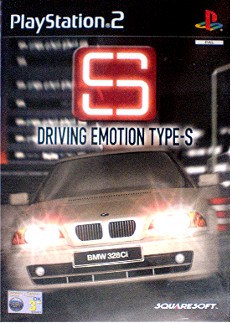
Driving Emotion Type-S is a racing game developed by Escape, a subsidiary of Square. It was published in Japan on March 30, 2000 and was Square's first release for the PlayStation 2 console. After criticisms of the game's handling, the international versions feature revised controls and additional contents, and were released in January 2001.

Contra 4 is a 2D action game published by Konami Digital Entertainment in the United States and developed by WayForward Technologies. It is the eleventh overall installment of the Contra series, and was released in North America on November 13, 2007 for Nintendo DS. A mobile port was released six days later on November 19, 2007. A rerelease, called Contra 4: Redux, was released for Android in 2011.

Top Spin 3 is the third title in the Top Spin series of video games. The game was developed by PAM Development and published by 2K. New game elements include real-time weather effects, more options of professional tennis players, an in-depth character creation tool and new unparalleled gameplay mechanics. It also features impressive advancements in an audio/visual sense with improved Dolby Digital surround sound and "Evolutionary" visuals. Top Spin 4 was released as a sequel about three years later.

The Sims 2: Castaway is the third console spin-off of the life simulation video game The Sims 2 for the Wii, Nintendo DS (NDS), PlayStation 2 (PS2) and PlayStation Portable (PSP). It is also available on mobile phones; Nokia offered Castaway on the Ovi Store. A roughly similar game, The Sims Castaway Stories, is available for personal computers, but is not a direct port of Castaway.

ESPN X Games Skateboarding is a video game developed by Konami for the PlayStation 2 and Game Boy Advance. The PlayStation 2 version was released in North America on August 14, 2001, in Japan on September 20, 2001, and in Europe on January 25, 2002, while the Game Boy Advance version was released in North America on September 12, 2001, in Japan on October 25, and in Europe on November 16. A release was planned in Australia, but was ultimately canceled. The game was released as part of Konami's ESPN The Games brand.



















